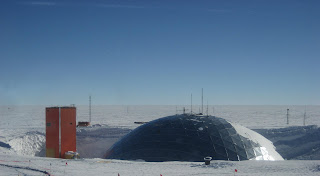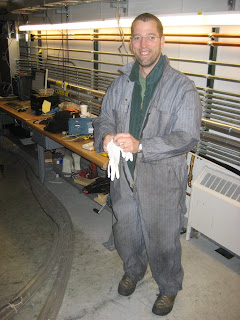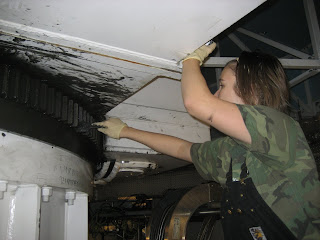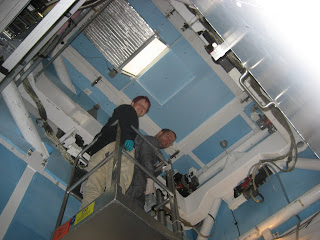For many years, the geodesic dome at the South Pole has been an iconic structure, the image of the place. The dome was built in the 1970’s by Navy Seabees. Unheated and with a snow/ice floor, it provided a windbreak for the small buildings inside it. In all my previous trips, I walked into the dome to go to the Galley for meals three times a day – I slept out in “summer camp”, which is a collection of (upgraded) Korean-war era double-wall half-cylinder tents known as Jamesways. (I really really like the new station – much easier to live in!)
This year, starting tomorrow in fact, they are taking apart the dome and shipping all the material back to the US. Yesterday a group of us walked over there to take pictures; the buildings have been moved out, making it an eerie sight on the inside, but much easier to grasp the scale of the dome. It’s an amazing structure, with lots of history, and it will be sad to see it come down.

The old dome, viewed from the Galley in the new station. The orange building on the left is Skylab, which used to house a variety of experiments doing things such as looking at the aurora. The dome had about 4 or 5 similar-looking buildings (square, orange) in it. The dome is now empty (see next photo), and Skylab is coming down soon.
A picture of the inside of the dome, now empty, ready to come down.
A picture of a torn panel, showing how thin the aluminum sheet is; Until I saw this, for some reason I always imagined that the aluminum triangles were much thicker!





